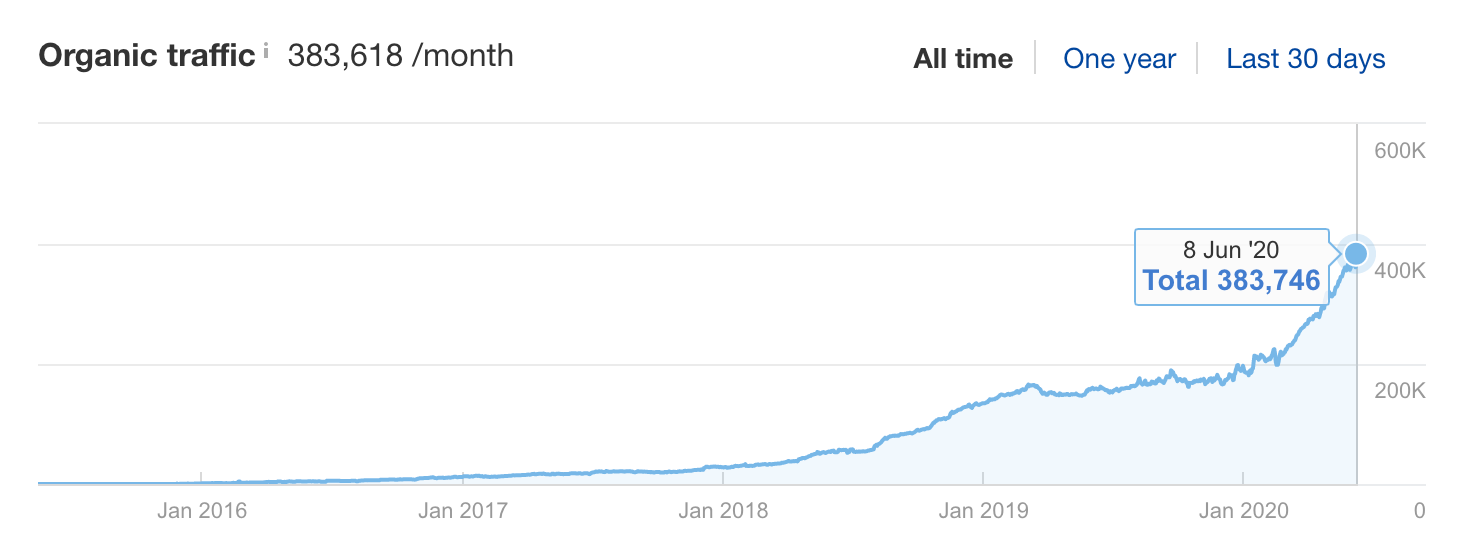Building a Product You Want Is the Best Way to Build a Great Product
Alfred Lua / Written on 10 June 2020
Hi there,
In case you missed it, here are the two essays I wrote last week:
- How to Improve Execution: Learnings on OKRs (for paying subscribers only)
- Don't Mistake Freemium as Just a Marketing Strategy
Improving execution and making freemium work are two things that are top of mind for me now. It'll be great to hear your thoughts, especially if you disagree with what I wrote so that we can both learn together.
Here's another topic I have been thinking about a lot recently:
How to build great products
I'm typing this with my Apple Magic Keyboard. Beside it is my Magic Trackpad, iPhone, and AirPods. And my Macbook Pro is connected to my monitors.
Steve Job's mental framework for building great products seems straightforward:
Build products that he himself wanted.
According to Walter Isaacson, the author of Steve Jobs:
Sometimes that meant that Jobs used a one-person focus group: himself. He made products that he and his friends wanted. For example, there were many portable music players around in 2000, but Jobs felt they were all lame, and as a music fanatic he wanted a simple device that would allow him to carry a thousand songs in his pocket. “We made the iPod for ourselves,” he said, “and when you’re doing something for yourself, or your best friend or family, you’re not going to cheese out.”
As I learned about more SaaS products, I noticed a similar pattern. Great products are built by people who build products for themselves.
ConvertKit, Ahrefs, Basecamp, Notion.
Paul Graham once wrote, "The very best startup ideas tend to have three things in common: they're something the founders themselves want, that they themselves can build, and that few others realize are worth doing. Microsoft, Apple, Yahoo, Google, and Facebook all began this way."
Be your own customer
Before founding ConvertKit, Nathan Barry sold books and courses on design.
At that time, he grew his email list to 30,000 subscribers in two years. The tool he used to grow his email list?
ConvertKit.
He was building ConvertKit for himself and people like him.
My initial goal was to create the best email marketing platform for authors and creators, just like me.
As a creator, he was consistently bringing in $250,000 every year. This made him the perfect customer for ConvertKit. He knows exactly what creators want and need because he is a creator himself.
And that was how he built ConvertKit. He built the exact features that creators want but that were not supported by other email marketing platforms such as Mailchimp:
- Offer opt-in incentives (e.g. enter your email to get a free PDF)
- Have multiple signup forms per email list
- Edit email courses in a single window
To run their business well, creators need these features but they had to find hacky workarounds to do them in Mailchimp. Barry understood the pain of using existing email marketing platforms to run a creator business. So he could build ConvertKit to solve those exact problems.
With that advantage, he was able to grow ConvertKit to more than $15 million annual recurring revenue in six years.
This was also how Buffer was founded. In Joel Gascoigne's own words:
The fundamental idea was to create a way to queue up tweets without scheduling each tweet individually. This is an idea I had after using other Twitter scheduling applications for the purpose of ensuring I didn’t flood people with 5 tweets at once whilst reading my tech & startup news in the morning. I couldn’t get it out of my head, and I’d suggested it to existing apps and they hadn’t implemented it. It was time to build it myself.
Joel was Buffer's very first customer.
Succeed with your own product
What if you didn't found the company? Many people, including myself, join a company after it already has a good product.
How do you make the product even better?
Tim Soulo joined Ahrefs when Ahrefs already had a strong SEO tool. To make it even better, Tim used Ahrefs to grow Ahrefs' blog.
Look at how its organic traffic has grown over the past five years:
 An Ahrefs' chart, of course
This makes Tim the perfect product advisor for Ahrefs.
An Ahrefs' chart, of course
This makes Tim the perfect product advisor for Ahrefs.
While using Ahrefs for content marketing, Tim discovered many areas in the product that could be improved. Using Ahrefs every day like other SEO professionals also allows him to understand their pain and desires for the product.
Besides that, Tim has been leading the industry in terms of growing organic traffic and has been able to see new product opportunities.
Just realized @Ahrefs is the only tool that can build backlinks/traffic "performance over time" graphs for individual URLs (and even subfolders).
Please correct me if I'm wrong...
Until then - 💪😎 pic.twitter.com/Bdvi5Kcv6Z — Tim Soulo (@timsoulo) May 18, 2018
Consider this list of 13 things that only Ahrefs can do.
To take an example from the list: marketers used to use search volume to assess the potential of keywords. It didn't always work because some keywords have high search volume but few clicks while some have low search volume but many clicks. SEO tools only provided search volume data, so marketers could only rely on that.
That's until Ahrefs added 'clicks' data.
Ahrefs customers now have 'clicks' data to inform them which keywords can actually generate organic traffic.
If Ahrefs had blindly followed its competitors, it would have built a product just like its competitors.
Practicing what I preach
While Joel built Buffer to space out his tweets, the use case for Buffer has grown beyond that. Small businesses are now using Buffer to grow their brand on Instagram, Facebook, and LinkedIn, too. While many of us in the team regularly talk to our customers, the best way is to be our own customer and succeed with our own product.
We have been using Buffer to grow the Buffer brand on social media since forever. But one thing we noticed is consumer brands, especially e-commerce brands, seem to benefit the most from social media, often much more than SaaS companies like ourselves. And we haven't been able to truly understand them.
That's why I started Open Atlas a few weeks back.
It is (well, will be) a notebook e-commerce brand. Even before the brand is properly launched, I'm already learning many pain points of marketers who are building their brand and growing an audience on social media.
 Open Atlas on Instagram
Doing this also increases the credibility of my recommendations to our product team. Not only do I have customer feedback and data on customer behavior, but I also have run into these issues myself while building a brand on social media.
Open Atlas on Instagram
Doing this also increases the credibility of my recommendations to our product team. Not only do I have customer feedback and data on customer behavior, but I also have run into these issues myself while building a brand on social media.
Starting a brand is just the first step. Like Barry who built a successful creator business and Tim who successfully grew Ahrefs' blog traffic, I need to build a successful brand.
If you want to give Open Atlas a follow on Instagram or help spread the word about it, I'll be so grateful!
P.S. Talking about building great products, I just shared a Twitter thread on why adding value doesn't always reduce churn:
“We keep adding value to our product but why is churn so high?”
Here are my observations and guesses:
1/12 — Alfred Lua (@alfred_lua) June 10, 2020
As usual, I'd love to hear if you disagree with any of my observations.